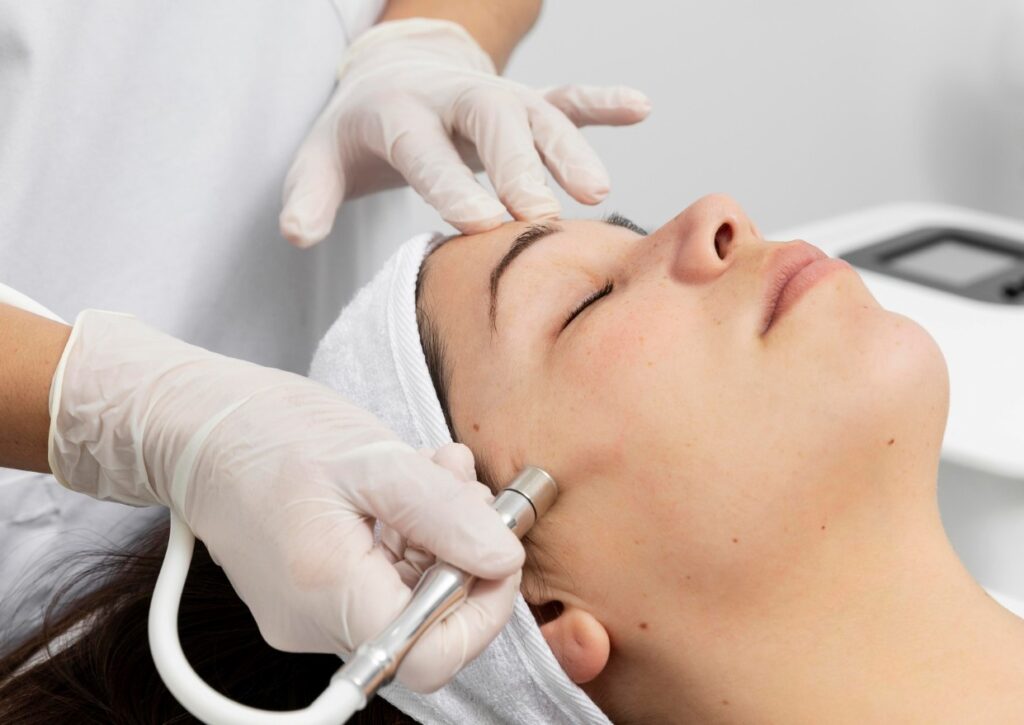Skin Dermabrasion in Singapore


Skin dermabrasion, a popular aesthetic procedure in Singapore, offers a non-invasive solution to various skin concerns.
With Singapore’s tropical climate, residents often face skin challenges that can benefit from this treatment. This procedure provides a rejuvenated skin appearance, addressing issues from sun damage to ageing signs.
The Dermabrasion Procedure
Preparation
Before the procedure begins, the skin is thoroughly cleansed to remove any dirt, oil, or makeup. This ensures a clean slate for the treatment. In some cases, a numbing cream or local anaesthetic may be applied to the treatment area to minimise discomfort.
Diamond-Coated Handpiece
The core of the dermabrasion procedure is the use of a special handpiece equipped with a diamond-coated tip. This tip is designed to provide precise and controlled exfoliation. The diamond particles on the tip serve as micro-abrasives, gently buffing away the outermost layer of the skin.
Exfoliation Process
The dermatologist or skin care specialist will move the handpiece in controlled strokes across the skin’s surface. As the diamond-coated tip comes into contact with the skin, it exfoliates the outer layer, removing dead skin cells and other impurities.
Vacuum System
Integrated into the dermabrasion device is a vacuum system. As the skin is exfoliated, the vacuum simultaneously suctions away the removed skin cells and debris. This ensures a clean procedure and also stimulates blood flow to the skin’s surface.
Post-Treatment Care
Once the procedure is complete, a soothing serum or moisturiser may be applied to the skin to hydrate and calm any potential redness. Avoid direct sun exposure immediately after the procedure and to apply sunscreen diligently when going outdoors. This protects the newly revealed skin layer from potential sun damage.
Duration and Sensation
A typical dermabrasion session can last anywhere from 30 minutes to an hour, depending on the treatment area’s size and the specific concerns being addressed. Patients often describe the sensation during the procedure as a mild scratching or sanding feeling. While there might be a slight tingling or warmth, the procedure is generally well-tolerated, with minimal discomfort.
Conclusion
Skin dermabrasion in Singapore stands as a testament to advancements in aesthetic treatments. Offering a range of benefits, from improved complexion to enhanced skin health, it’s a sought-after procedure for those aiming for skin rejuvenation. As with any treatment, consult with a qualified professional to determine suitability and expected outcomes.
Our Clinic Location
Mount Elizabeth Novena Specialist Centre
#10-26/27,
38 Irrawaddy Road
Singapore 329563
Schedule Your Appointment Now
Leave us your details and Dr Marco will get back to you shortly.
Frequently Asked Questions (FAQs)
How does skin dermabrasion compare to other skin resurfacing treatments like chemical peels or laser treatments?
Skin dermabrasion is a mechanical exfoliation technique that removes the outermost layer of the skin. Chemical peels use acids to dissolve dead skin cells, while laser treatments use light energy to target specific skin concerns. Each method has its unique benefits and suitability, depending on the individual’s skin type, concerns, and desired results.
How long should I wait between consecutive skin dermabrasion treatments?
Typically, it’s recommended to wait 3-4 weeks between sessions to allow the skin to heal and regenerate fully. However, the exact duration can vary based on individual skin needs and the intensity of the treatment.
Can skin dermabrasion be combined with other facial treatments during the same session?
Yes, skin dermabrasion can be paired with other treatments like facials or masks for enhanced results. However, consult with a skincare specialist to ensure the chosen treatments are compatible.
Is there a specific age range that benefits most from skin dermabrasion, or is it suitable for all ages?
While skin dermabrasion can benefit individuals of all ages, it’s particularly popular among those in their late 20s to 50s, as it addresses signs of ageing, sun damage, and skin texture concerns prevalent in this age range.
How does the tropical climate of Singapore impact the results and aftercare of skin dermabrasion?
Singapore’s humid climate can make the skin more susceptible to sun damage and clogged pores. After dermabrasion, protect the skin from the sun and keep it clean to prevent any complications.
How long do the results of a single skin dermabrasion session typically last?
The results can vary based on individual skin types and concerns. Generally, the effects of a single session can last anywhere from 2-4 weeks. Regular sessions can help maintain and enhance these results.
Is skin dermabrasion effective for treating acne scars or deep-set wrinkles?
Skin dermabrasion can help reduce the appearance of superficial acne scars and fine lines. However, for deep-set wrinkles or more pronounced scars, more intensive treatments might be required.
Are there any potential allergic reactions or sensitivities associated with the materials used in the dermabrasion procedure?
The diamond-coated handpiece used in dermabrasion is hypoallergenic and designed to minimise skin reactions. However, as with any procedure, there’s always a slight risk of individual sensitivities. Discuss any known allergies or skin sensitivities with the practitioner before the procedure.